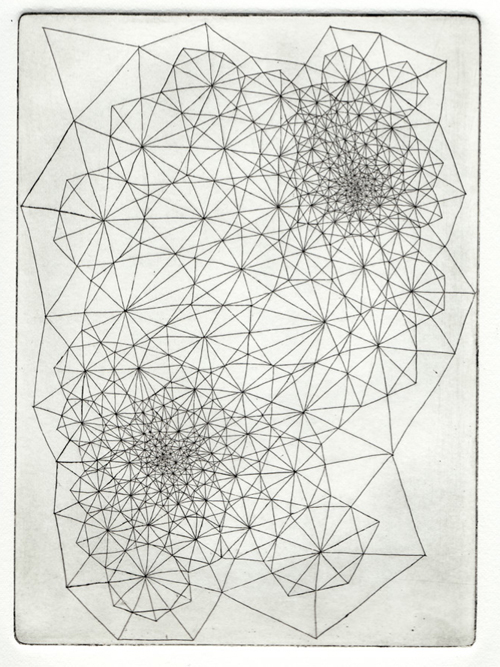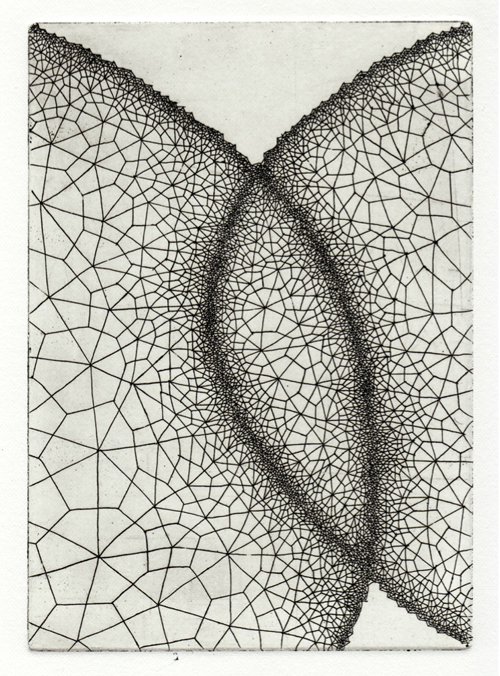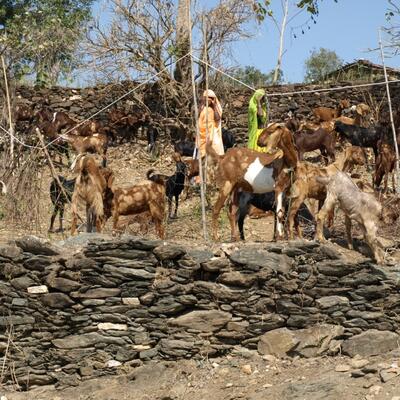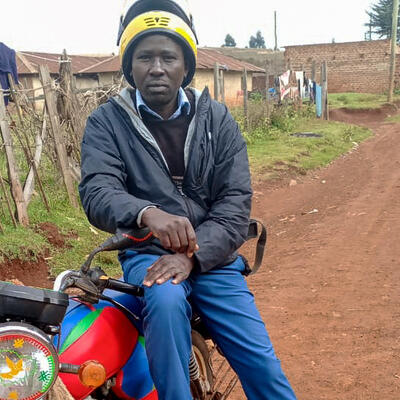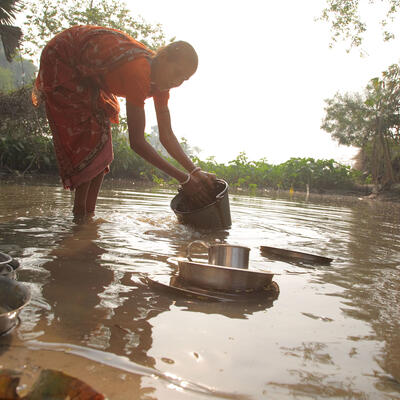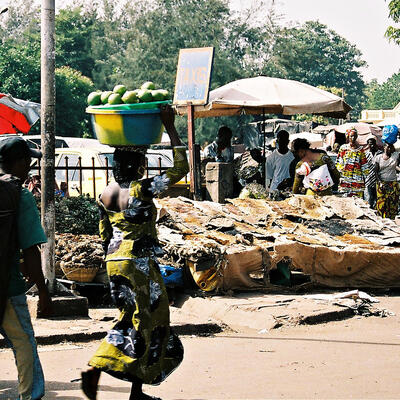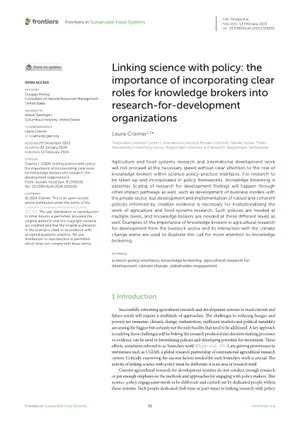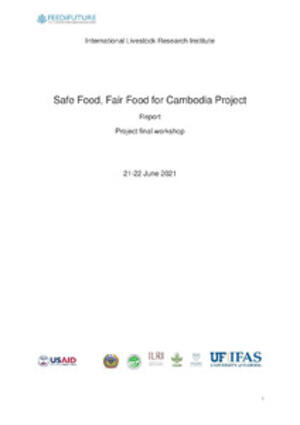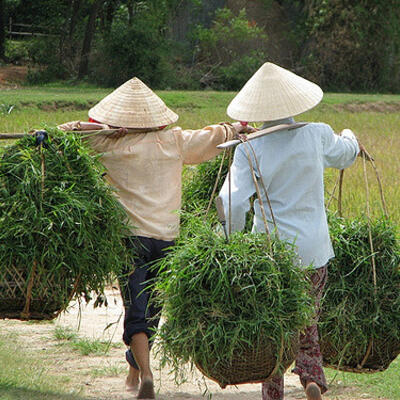
Millions of new social groups are delivering better agricultural and land management
Etching by Clint Fulkerson.
Millions of geographically based
new social groups are leading to
more sustainable agriculture
A new paper in the scientific journal Global Sustainability presents some interesting findings on the rise over the past 20 years in social movements around sustainability management. Jules Pretty, professor of environment and society at the Unversity of Essex, UK, is the lead author; ILRI’s Africa RISING project coordinator Peter Thorne is a co-author.
—Iain Wright, ILRI deputy director general–integrated systems
For the sake of readability, the extracts from the paper that follow exclude many useful citations, which readers will find in the full paper.
From ‘Non-technical summary’
‘Until the past half-century, all agriculture and land management was framed by local institutions strong in social capital. But neoliberal forms of development came to undermine existing structures, thus reducing sustainability and equity.
The past 20 years, though, have seen the deliberate establishment of more than 8 million new social groups across the world.
This restructuring and growth of rural social capital within specific territories is leading to increased productivity of agricultural and land management systems, with particular benefits for those previously excluded.
Further growth would occur with more national and regional policy support.
From ‘Technical summary’
‘For agriculture and land management to improve natural capital over whole landscapes, social cooperation has long been required. The political economy of the later twentieth and early twenty-first centuries prioritized unfettered individual action over the collective, and many rural institutions were harmed or destroyed. Since then, a wide range of social movements, networks and federations have emerged to support transitions towards sustainability and equity. Here, we focus on social capital manifested as intentionally formed collaborative groups within specific geographic territories. These groups focus on: (1) integrated pest management; (2) forests; (3) land; (4) water; (5) pastures; (6) support services; (7) innovation platforms; and (8) small-scale systems.
We show across 122 initiatives in 55 countries that the number of groups has grown from 0.50 million (in 2000) to 8.54 million (in 2020).
The area of land transformed by the 170–255 million group members is 300 Mha, mostly in less-developed countries (98% groups; 94% area).
‘Farmers and land managers working with scientists and extensionists in these groups have improved both environmental outcomes and agricultural productivity. In some cases, changes to national or regional policy supported this growth in groups.
Together with other movements,
these social groups could now support
further transitions towards policies and
behaviours for global sustainability.
From ‘5. Outcomes: documented impacts’
‘Across all of the literature, there is considerable evidence of improvements within agroecosystems, landscapes and farm household economies as a result of the formation of intentional social capital within geographical areas. Comparisons have been made between projects/programmes working with groups compared with individuals, with prior degraded natural systems (e.g., forest or eroded landscapes), with prior agroecosystems harmed by compounds used in agriculture (e.g., harmful pesticides) and with agroecosystems with legacies of low productivity (e.g., that have not seen productivity improvements in recent decades).
The overwhelming evidence from the field and reported in the published literature is that collective management of resources can lead to redesign and also result in net increases in system productivity.
‘There have been few counterfactual examples, such as where groups could have been formed to increase resource exploitation or extraction (e.g., water or forest capture). . . .
From ‘6.5. Category 5: pasture and range management’
‘Notable pasture examples of social capital include the establishment and spread of management-intensive rotational grazing groups (MIRGs), which require new thinking and methods for grazing practices, diversification of cropping, including organic agriculture, and new approaches for agropastoralism. In Brazil, redesigned Brachiaria forages in maize–rice and millet–sorghum systems have increased net productivity and have led to large increases in all-year forage, used both for livestock and as a green manure. MIRGs use pasture redesign centred on short-duration grazing episodes on small paddocks or temporarily fenced areas, with longer rest periods that allow grassland plants to regrow before grazing returns. Well-managed grazing systems have been associated with greater temporal and spatial diversity of plant species, increased carbon sequestration, reduced soil erosion, improved wildlife habitat and decreased input use.
‘Group innovations have occurred in Uganda with the development of agropastoral field schools (APFSs) and with the training of a large pool of facilitators and trainers. The primary aim has been to build resilience for communities subject to recurrent hazards such as droughts, flooding and animal diseases, some of which are accentuated by climate change. Some 4400 APFSs have been deployed, with the training of 850 facilitators and master trainers. Agropastoralists enhance their livelihood resilience by increasing the number of intervention options, including pest and disease management, tree nurseries, watershed management, group marketing, vegetable production, improved seeds and livestock nutrition. In Kenya and Uganda, volunteer farmer trainers have helped facilitate >300 dairy producer groups. . . .
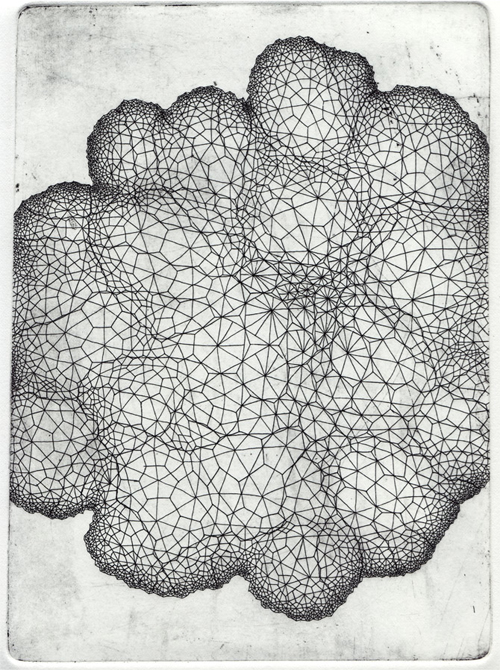
Etching by Clint Fulkerson.
From ‘7. Securing sustainability’
We have shown that over the past two decades a variety of novel social infrastructure has created platforms for collective transitions towards greater sustainability of agriculture and land management amongst rural communities across the world.
These have led to greater flows of knowledge and technologies and built trust amongst individuals and agencies.
The cumulative increase in numbers of social groups from 0.5 million to 8.5 million over two decades implies that there have been transformations in capacity and personal benefit combined with improved environmental outcomes for agricultural landscapes.
‘The marked difference in implementation and uptake of social capital between industrialized and less-developed countries is striking. In industrialized countries, farmers have also tended to be self-organized into value chain-based groups of common interest rather than into groups within specific geographical territories, though this could change with growing interest in policy support for landscape-scale change to deliver public goods . . . .
‘This shift towards sustainable redesign in agriculture and land management has been successful where individual worldviews have changed, emerging from the processes of co-production
embedded in groups. . . .
It has previously been argued that social groups, movements and campaigns comprise an ‘immune system’ for the planet, in that they offer platforms for collective action and larger-scale action towards greater sustainability and equity.
‘. . . Social capital in a variety of forms could help to open up science to innovation, particularly where problems are complex and solutions unknown and where the values of all actors are salient.
‘Nonetheless, there will be constraints and countervailing pressures. Land tenure and secure rights are preconditions to local people making long-term investments in natural and social assets.
When Burkina Faso and Niger granted rights to individuals to use their own trees as they wished (mid-1980s), this resulted in an increase in tree cover as there were now incentives for the longterm rather immediate resource extraction.
‘. . . [A]s social groups federate into higher-level structures, they too are able to act to deliver greater agricultural and natural capital benefits, as well as returns to farmers. Though we were unable to gather data on the gender mix between and within social groups,
it is clear that mixed groups of women and men are more effective (in terms of farm and/or forest productivity) than single-gender groups, and groups of women are more effective than groups just consisting of men.
Programmes seeking to form social groups will thus need to be aware of how to ensure full and proper participation by women.
‘. . . The socially connected live longer and are happier, and countries with higher levels of trust in other people are happier. Volunteers who contribute to the well-being of others and to the quality of lived environments tend to have healthier lifestyles, lower incidence rates of mental ill health and to live longer. On the other hand, net well-being across populations is reduced by growth in inequity, breakdown of social structures and support and lack of access to natural and green spaces.
This platform of 8.5 million social groups
distributed across 55 countries, but
comprising 3% of the world’s population,
could comprise an opportunity
to consider greater challenges,
such as advances towards meeting the
Sustainable Development Goals and
addressing climate change. . . .
Etching by Clint Fulkerson.
From ‘8. Concluding comments’
‘This assessment has shown growth in the numbers of groups engaged in platforms of innovative and sustainable management within geographical territories of engagement over the past two decades. These groups deliver individual and public benefits, improve well-being and natural capital and provide platforms for wider progress towards sustainability. These groups provide the basis for further progressive change towards sustainable policies and behaviours, with opportunities to help mitigate the advance of some global environmental challenges. We further note this social infrastructure has already changed worldviews and capacities to redesign towards sustainability and increased net productivity of agricultural and land systems. . . .’
[M]ore support is needed to ensure best practice is spread to aid the transitions towards more sustainable and equitable forms of farmed and managed landscapes worldwide.
Read the whole paper:
Jules Pretty, Simon Attwood, Richard Bawden, Henk van den Berg, Zareen P. Bharucha, John Dixon, Cornelia Butler Flora, Kevin Gallagher, Ken Genskow, Sue E. Hartley, Jan Willem Ketelaar, Japhet K. Kiara, Vijay Kumar, Yuelai Lu, Tom MacMillan, Anne Maréchal, Alma Linda Morales-Abubakar, Andrew Noble, P. V. Vara Prasad, Ewald Rametsteiner, John Reganold, Jacob I. Ricks, Johan Rockström, Osamu Saito, Peter Thorne, Songliang Wang, Hannah Wittman, Michael Winter and Puyun Yang. 2020. Assessment of the growth in social groups for sustainable agriculture and land management. Global Sustainability 3, e23, 1–16. https:// doi.org/10.1017/sus.2020.19






